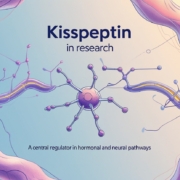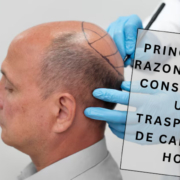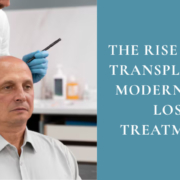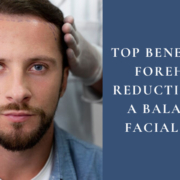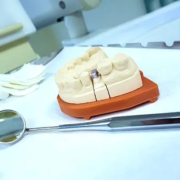Sleep apnea, a condition marked by interrupted breathing during sleep, affects millions of people worldwide. While most associate its treatment with CPAP machines or lifestyle changes, a lesser-known but highly effective route is oral surgery. For patients who do not respond well to conservative treatments or need long-term relief, surgery may offer a more permanent solution. This article dives deep into the connection between oral surgery and sleep apnea treatment, how the procedures work, and what patients can expect during and after the process.
Understanding Sleep Apnea
Sleep apnea is primarily categorized into two types: Obstructive Sleep Apnea (OSA) and Central Sleep Apnea (CSA). OSA is more common and occurs when the muscles in the throat relax excessively, blocking airflow. CSA, on the other hand, is a neurological issue where the brain fails to send proper signals to muscles responsible for breathing.
Common symptoms of sleep apnea include:
- Loud snoring
- Gasping for air during sleep
- Daytime fatigue
- Morning headaches
- Difficulty concentrating
Many sufferers are unaware of their condition until a sleep partner or doctor points it out. Left untreated, sleep apnea can increase the risk of heart disease, high blood pressure, diabetes, and even stroke.
Why Oral Surgery for Sleep Apnea?
While CPAP machines are the go-to treatment, they are not always comfortable or convenient for everyone. Many patients struggle with wearing the mask every night or dealing with the machine’s noise. That’s where oral surgery steps in as a reliable alternative, especially for those with structural abnormalities contributing to airway obstruction.
Oral surgery helps by physically altering the structures in the mouth and throat to enhance airflow. In many cases, it can significantly reduce or even eliminate the need for mechanical assistance during sleep.
Types of Oral Surgeries Used in Sleep Apnea Treatment
Uvulopalatopharyngoplasty (UPPP)
This is one of the most common surgeries for sleep apnea. It involves removing excess tissue from the throat — including the uvula, parts of the soft palate, and sometimes tonsils — to widen the airway.
Genioglossus Advancement (GA)
The genioglossus is the primary muscle that makes up the tongue. In some patients, a relaxed or oversized tongue falls back and blocks the airway. GA repositions the tongue muscle attachment to prevent this collapse.
Maxillomandibular Advancement (MMA)
For severe cases, MMA may be recommended. This surgical procedure repositions both the upper (maxilla) and lower (mandible) jaws forward. The result is a larger airway and a reduced chance of airway obstruction during sleep.
Nasal Surgery
If blocked nasal passages contribute to your sleep apnea, surgeries like septoplasty (to fix a deviated septum) or turbinate reduction can improve airflow through the nose, supporting other treatments or serving as a standalone fix for mild OSA.
Hyoid Suspension
This lesser-known but effective technique involves repositioning the hyoid bone (located in the neck) to stabilize the airway.
How to Know If You’re a Candidate for Surgical Treatment
Not every person with sleep apnea will benefit from surgery. Ideal candidates usually:
- Have anatomical issues contributing to airway obstruction
- Cannot tolerate CPAP therapy
- Have moderate to severe sleep apnea
- Are in good general health
An in-depth evaluation that includes imaging, sleep studies, and consultations with specialists is crucial before deciding on surgery.
Benefits of Oral Surgery in Sleep Apnea Management
Patients who undergo oral surgery for sleep apnea often report substantial improvements, including:
- Better sleep quality
- Reduced or eliminated snoring
- More energy and alertness during the day
- Improved cardiovascular health
- Better relationships and quality of life
Unlike CPAP or oral appliances, surgery offers a more permanent solution. While it does involve a recovery period, the long-term benefits can be life-changing.
Risks and Considerations
As with any surgical procedure, oral surgeries for sleep apnea carry risks, such as infection, swelling, or nerve damage. There’s also a chance the surgery may not completely resolve the condition. That’s why a comprehensive pre-surgical assessment is essential, along with a clear discussion of the potential outcomes.
Recovery times vary based on the procedure. Most patients can return to daily activities within a few weeks, although full healing may take a few months. Post-operative support, including follow-up visits and sleep studies, helps monitor the success of the procedure.
Combining Oral Surgery with Other Treatments
Some patients benefit the most from a multi-layered approach. For example, surgery may be followed by the use of oral appliances or lifestyle changes like weight loss, smoking cessation, or allergy treatment. This hybrid method maximizes the chances of long-term success and minimizes relapse.
Pediatric Considerations
Children with enlarged tonsils or adenoids often suffer from sleep apnea. In these cases, a tonsillectomy and adenoidectomy may significantly improve symptoms. Pediatric oral surgery must be handled with particular care, but the outcomes are often excellent, leading to better sleep, behavior, and academic performance.
Future Trends in Surgical Treatment of Sleep Apnea
Technological advances are making sleep apnea surgery safer and more effective. Innovations like robotic-assisted surgery and image-guided navigation allow for precise modifications with minimal side effects. New devices and tools continue to emerge, giving surgeons better control and patients faster recovery.
Minimally invasive procedures are also on the rise, reducing downtime and scarring. The future of sleep apnea treatment is bright, with oral surgery playing an increasingly vital role.
What to Expect During the Process
Here’s a general roadmap if you’re considering surgery:
- Diagnosis: Sleep study to confirm sleep apnea and assess its severity.
- Consultation: A multi-specialist team, often including an ENT, sleep doctor, and oral surgeon, will review your case.
- Pre-Operative Planning: Imaging, health assessments, and possibly lab work.
- Surgery Day: Usually an outpatient procedure under general anesthesia.
- Recovery: Includes follow-up visits and sleep studies to confirm improvement.
A personalized plan tailored to your anatomy and condition ensures the highest chance of success.
Real-World Impact of Surgical Treatment
Patients who’ve undergone surgery often describe it as life-changing. Improved sleep brings a cascade of benefits: better mood, sharper memory, enhanced immune function, and lower risk of serious illnesses. For many, it means finally waking up feeling refreshed after years of poor sleep.
And for those in South Florida seeking professional help, Oral surgery in Hallandale Beach, FL has become a trusted option for those battling persistent sleep apnea.
Final Thoughts
Sleep apnea is more than just a snoring problem; it’s a serious medical condition that affects every part of your life. While CPAP therapy remains the frontline treatment, oral surgery offers a promising solution for those who need something more permanent. With expert assessment and the right surgical approach, you can reclaim restful nights and healthier days.
Village of Dentistry is the most technologically advanced dental clinic in South Florida. This allows us to offer the highest quality care, faster results with same-day procedures, and hyper-personalized treatments. Our main goal is 100% patient satisfaction. Every individual is different. Our clinicians work together with you to create the best care plan that meets your needs. We strive to provide the best patient care possible that exceeds your expectations.
click here to visit website for more interesting collection of articles

